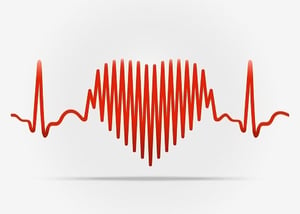Translational Research & Why You Should Care about Functional Parameters in Your Research.
 We often do not feel well when physiological processes in our body are disturbed, as when we are sick or injured. Translational research specifically aims to improve health outcomes, make us feel better, and make our bodies work well, by combining knowledge from basic science and clinical trial research. Measuring functional parameters, or how well an organ or body part is capable of executing its normal task, are extremely important in this process. These functional parameters are the most fundamental, key points in the research success of a translational scientist or safety pharmacologist.
We often do not feel well when physiological processes in our body are disturbed, as when we are sick or injured. Translational research specifically aims to improve health outcomes, make us feel better, and make our bodies work well, by combining knowledge from basic science and clinical trial research. Measuring functional parameters, or how well an organ or body part is capable of executing its normal task, are extremely important in this process. These functional parameters are the most fundamental, key points in the research success of a translational scientist or safety pharmacologist.
The road to finding a cure to a medical condition can be long and full of obstacles. The basic biological knowledge contributing to translational research comes largely from academic scientists. Many university project proposals contain a chapter in which the objective is to unravel the role of a certain signaling pathway involved in a disease or condition. In other words, the goal is to determine which protein interacts with which protein in a specific process and more specifically which proteins in such a signaling pathway are altered in a disease state.
The expertise to reveal key proteins in these signaling pathways is found at universities in the form of transgenic (animal) models, in which candidate proteins can be deleted or overexpressed in a specific tissue or organ. The goal is to investigate the role of a protein in the disease that has been induced in the transgenic model. Will these transgenic animals become less sick compared to normal animals? The way to measure the disease state is to investigate a functional parameter; in other words, to measure the function of the diseased organ. Molecular and biochemical parameters may show significant changes, but if these changes do not result in a healthier organ, the transgenic alteration does not necessarily help to improve the disease state. In the case of heart disease, one would have to measure the heart function with pressure-volume loops in both healthy and diseased, normal and transgenic animals to investigate if the protein of interest indeed alters the heart function. If it does, you may have found a potential drug target!
The pharmaceutical industry often spends years screening components that alter the function of the key signaling proteins or that work in the same fashion to stimulate a natural process. A well-known example of this are the β1-adrenergic agonists, developed after Dr. Raymond Ahlquist described the β adrenergic receptor in 1948. β1-adrenergic agonists are components that mimic the signaling of adrenaline in the sympathetic nervous system resulting in an increased heart rate. A well-known example of a β1-adrenergic agonist is dobutamine which helps patients with acute heart failure. It increases their heart rate and the left ventricle blood pressure build-up, resulting in an increased blood supply to the rest of the body.

Example of functional measurement: Shown in red, a pressure-volume loop of a healthy human heart. The left ventricle of a patient with acute heart failure will demonstrate a loop similar to the one shown in blue. Dobutamine treatment results in a loop shown in green, where the left ventricle blood pressure, depicted on the vertical ax, is improved compared to the blue loop. Data obtained from the HARVI app.
Through in-vitro studies, followed by whole organ and full in-vivo testing, the pharmaceutical industry aims to assure that drugs that make it to clinical trials are safe to use. You may ask yourself the question, how is the decision made regarding which component to continue testing and which one top drop from the process? Of extreme importance in answering this question are toxicology tests and safety pharmacology studies. Safety pharmacology studies test whether the component does what it is supposed to do, without significantly influencing the performance of other organs or causing side effects. You may have discovered a very potent component to fight cancer, but if this component also introduces heart disease, the component won’t be approved. And how do you know if it causes heart disease? You perform functional tests!
Whether you are a translational scientist working at a university or a safety pharmacologist working at a pharmaceutical company, quantification of functional parameters is your key to successful studies. We at Transonic live by our motto “To Measure is to Know” and have invested ourselves in providing you with the most accurate functional measurements possible. If you want to learn more about optimizing your surgical protocols, you will find background information as well as a large collection of application protocols in our rodent surgery workbook. Last but not least, feel welcome to contact one of our application scientists; we are here to help and we get excited about helping you carry out your best work!



